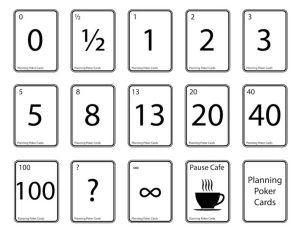Decomposition of goals and objectives

You can achieve your goals in many ways. Chaotically moving from side to side, or moving to them progressively and measured, building for yourself a basic schedule, which is divided into individual stages. By accomplishing task after task, you will be able to get closer to the desired result much faster. Clarity, sequence of interrelated actions will help you avoid many mistakes on the way because of disorganization. Decomposition helps to correctly break down the whole action plan into smaller subtasks. This is a scientific method based on the movement from the basic to the particular. By dividing large-scale tasks into their component parts, they are easier to study and analyze. Therefore, smaller tasks are much easier to accomplish.
What it is and why it is needed
Decomposition, goals that are difficult to achieve turn into a hierarchy of small tasks that no longer seem so difficult and impossible to accomplish. Clearly formulated tasks are much easier to accomplish. The correct formulation of the goal “Get rich” would mean, “Increase your income to 6000$ monthly.” Or, “Change profession in 2024 and increase monthly income to 6000$ monthly”.
The decomposition method is used in science, philosophy, marketing, economics and other different fields. It is used to analyze complex processes. In forensics, this research tool is commonly referred to as deduction. The use of goal division helps to achieve the desired result by focusing on the main thing and with less risk.
For example, Ann’s goal is to become a marketer. In order to achieve it, it is necessary to take into account various factors and perform many actions: to undergo training, to sharpen the acquired knowledge in practice, to gain experience in the organization or in production, to study in detail the specifics of the future sphere in which she will work. From the point of view of decomposition in building a path and achieving the goal of a girl may look like this:
- Enroll in relevant, targeted courses.
- To study the theoretical part of the subject and theses. To do this, she should familiarize herself with cases, listen to thematic lectures, watch videos on the right channels, attend events on the subject.
- Practice the knowledge and skills learned every day, several hours a day.
- Sign up for a good internship and spend more time in a work environment to gain practical experience for future work.
The value of the goal in this case is broken down into individual tasks, which are split into even smaller steps. In time management, large goals and tasks are defined as so-called “elephants”. Agree, it is physically impossible to “eat an elephant” (to solve a voluminous task). But, if you decompose it into separate pieces, as the goal decomposition teaches, you can gradually cope with such a huge portion. Small degrees or simple tasks are called “steaks” in this case. Ideally, each should take from a few minutes to 2 hours to complete.
The number of levels in the decomposition model depends on the specifics of the company’s activities. In most cases, structural decomposition is limited to the third level. But, in large holdings, international companies and state structures the decomposition of tasks can reflect six levels. Strategy, global goals of the company are formed from its mission and values. Then tactical and functional tasks are formed from them.
In terms of formation and prioritization, decomposition can be compared to the approach of Dwight Eisenhower, who proposed to select the most important tasks from the volume of daily activities. And only then move on to tasks that require urgent fulfillment. He believed that the need to complete a task by a certain time reduces the possibility of its realization. This causes problems and haste that prevent the task from being completed efficiently.
How decomposition helps in business

This method is widely used in modern time management and project management. It is indispensable when solving complex tasks and working on large-scale team projects. The decomposition technique is used in the development of interfaces in the IT industry. It can be fully implemented in sales and administration. This tool helps:
- To make sure that it is realistic, possible to realize the set tasks.
- Break down a large object, a goal into individual elements, present the order in which each step should be accomplished.
- Prioritize properly, focusing on the major, serious matters first.
- Calculate how much time is needed to accomplish each item on the list.
- Prepare the resources that will be required to accomplish the task at hand.
- Schedule reserve time for time-consuming and difficult assignments.
- Select performers with appropriate qualifications and knowledge for the job.
- Evaluate the quality of their execution, make sure that the chosen direction is correct. Replace and make adjustments if necessary.
An example of decomposition in the field of commerce:
The global objective is to increase the size of the average amount of purchases from each customer. A series of subtasks for this main objective will be: launching a promotion, additional discounts, improving the quality of customer service. These subtasks are further divided into smaller elements: the size of discounts is specified so that they are profitable for the store and attractive for the customer. Ways to improve the skills of employees to improve the quality of customer service are identified.
Advantages of using the method
The decomposition method makes it easier to work on complex goals and projects. It is impossible not to talk about its other advantages:
- Easier orientation to goals and objectives. By breaking down the global goal into components, you can track your progress, learn from your experience, and adjust your direction as needed.
- Competent allocation of resources needed to achieve the goal. Implies that large tasks are difficult to work with. There are always doubts: where and how to start. When they are related to simple and clear, it is easier to distribute them among the performers.
Decomposition has 2 types, it happens:
- Horizontal, with division by levels, components and types of work. In this division of tasks there is no specification of each step. Therefore, the result in this case can be visualized only after all steps are completed.
- Vertical, with in-depth detailing of processes from the top level to the bottom level. Each task is done individually, obtaining a certain result. This option is more convenient to use, as each step can be analyzed separately, making the necessary adjustments at any time.
Vertical decomposition is part of the agile methodology. As the project progresses, the client is presented with the finished product piece by piece, waiting for feedback to make the necessary changes. Decomposition is performed at the beginning or during the next sprint.
Levels, decomposition rules
When planning, several levels of decomposition are distinguished. At the zero level there is the main objective. An example of a global objective is the development of an application for mobile devices.
- At the first level, enlarged blocks and components are allocated. In this case, it will be the platform for the future application: Android and iOS.
- On the second level, large blocks are divided into subtasks. Example: view of the main game screen depending on user scenarios.
- At the third level, further fragmentation of tasks takes place. That is, the development of separate blocks (authorization, payment options, animation effects, etc.).
When breaking down tasks into separate steps, you need to follow a few important rules:
- The duration of each step should be no more than 120 minutes.
- Sub-tasks should have the clearest and clearest possible wording with a specific performance indicator in the form of a finished product.
- To effectively perform the main task, it is necessary to competently distribute the tasks included in it among the performers.
Decomposition methods

Having formulated a key project objective, you can move on to breaking it down into its component parts. Various technologies are used for this purpose, including:
S.M.A.R.T. method
Thanks to this tool, the goals become more concrete. The meaning of the methodology lies in its acronym:
S – Specific. This means that each task should have as clear and specific a description as possible.
M – Measurable. The result obtained should be measurable.
A – Attainable. Goals must have business value, be realistic and achievable.
R – Relevant. The task should be relevant to the moment, important and in need of execution.
T – Time-Bound. Each step is limited by its time frame in terms of time.
Example: Working as a web designer in an IT company, I earn $5,000 per month. Next year, I would like to increase my income and improve my well-being. My SMART goal would be formulated as follows: “In 2024 (time constraint), to receive a salary of up to $7000 per month (measurability of the result), but not less than $6000 (concretization of the result).
Dividing the goal into steps
This is the easiest way to perform decomposition. Having formulated the main goal, it is written down on paper or in a special electronic application. Underneath the main goal are the tasks that need to be performed to realize this goal with dates. Within the tasks, you can use additional means to specify actions: checklists, shopping lists or other elements.
Tasks are linked in stages in a horizontal or vertical direction. For example, when erecting a house, first the foundation is laid, then the entire construction of walls, roof, and only then is made decorative finishing. And when creating a website, work on programming, layout, design can be carried out in parallel.
Mental maps or mindmaps
This technology helps to visualize the structure of the goal, showing all its tasks, their relationships to each other and the sequence of their execution. Writing down subtasks on paper makes them difficult to track and control. Especially when some steps need to be performed in parallel. Mindmap visually demonstrates each task. That’s why this decomposition method is often used during brainstorming sessions.
Gantt chart
This tool is used for decomposition by work stages. For this purpose, large tasks are divided into subtasks, steps, operations, which are performed in a certain sequence. The scales of the diagram show deadlines and dates of tasks, dependencies, milestones (project milestones), resources (people, technology, equipment needed to achieve the goal).
Popular services for decomposition
You can work on dividing large tasks manually, using an ordinary sheet of paper, pen or pencil. Or you can do it in a more convenient way, using Excel spreadsheets, Google docs, or other digital services “customized” for planning and project management.
Decomposition in LeaderTask

Everything according to the principle of decomposition is realized in the LeaderTask electronic application. Using this planner, you can analyze the desired profit from the project, track the quality, the level of completed tasks, the efficiency of each employee. This software is ideal for task management. In LeaderTask, you can create to-do lists, goals, projects. The larger the goal, the easier it is to split tasks into subtasks. Attach documents, notes, and other files to them. Organize shared access to tasks to work on a common project. Delegate tasks to responsible executors with control over their execution. Store important information, including photos, presentations, tables, tasks themselves and related files.
Tasks can be prioritized by priority and due dates. Set up a notification system so that you don’t lose sight of important events and tasks. The program synchronizes with all digital platforms. It has a full-fledged mobile application. Works without internet, in offline mode.
Conclusion
Decomposition is a universal way of working on complex, large-scale projects. This method is convenient to use for planning and effective task setting. By applying this time management tool, you can literally “break down” all the work processes of a project, making them understandable and realistically achievable.
By visualizing your goals and understanding what movements you need to make on the way to achieving them, it is much easier to achieve the most complex strategic goals. Moreover, you can apply this technology in any area of life: for business development, creating new products, increasing sales or achieving personal results.



